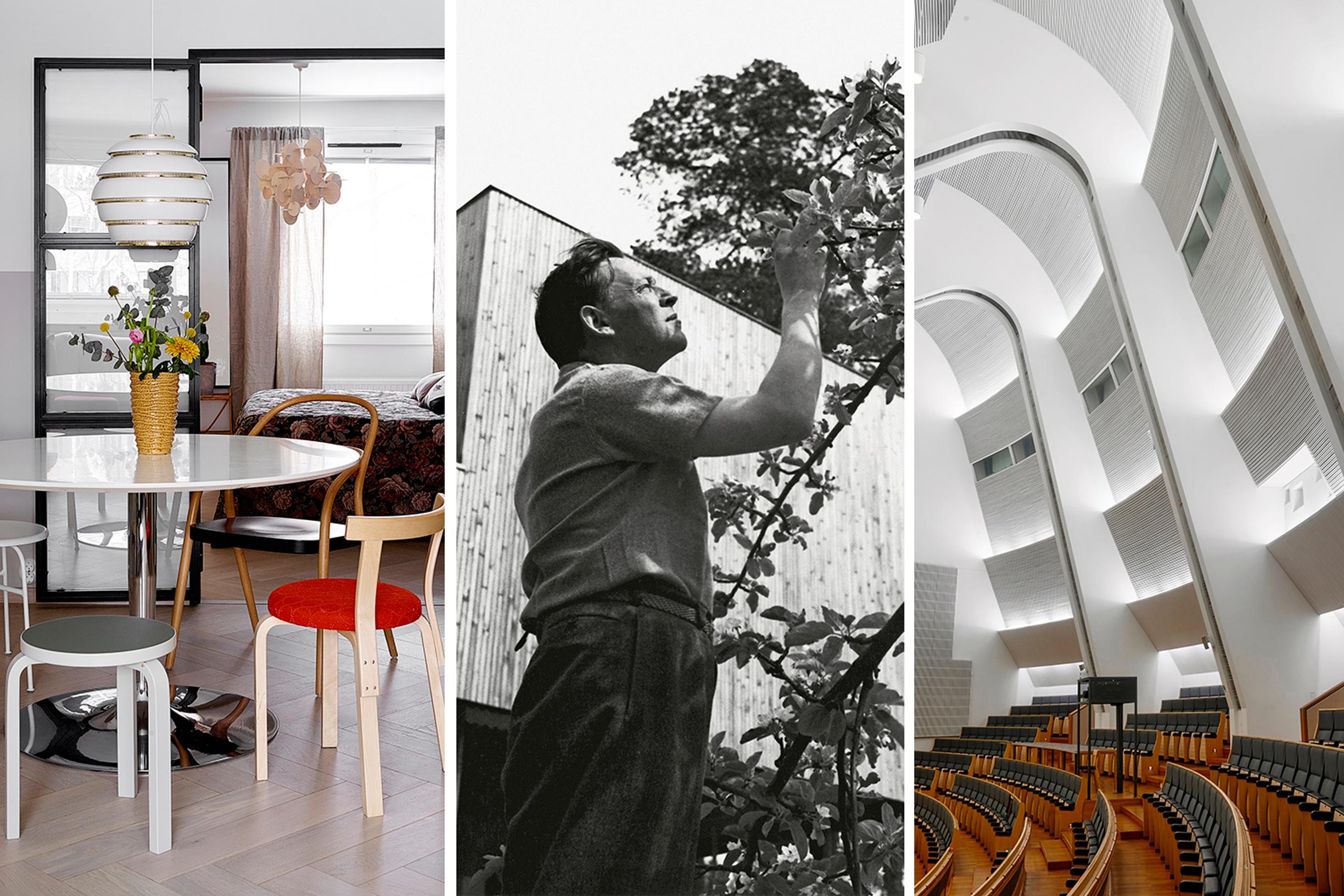
Alvar Aalto was a master of clean lines and carefully considered details—the beloved design classics pass from generation to generation
Alvar Aalto (1898–1976) had a versatile career as an architect and designer. He designed his buildings holistically, all the way down to the interior decoration. Aalto’s bentwood furniture, sculptural lamps, and vases continue to captivate people from generation to generation.
An ad pops up in the neighborhood’s Facebook flea market group, offering some decades-old small Artek chairs. In no time, the comment section fills with eager reservations and hopeful “next in line” comments. Vintage Artek furniture is highly sought after among decorators these days.
Artek’s furniture has a history spanning over 85 years. The first bentwood pieces were developed by Finland’s most internationally renowned architect Alvar Aalto as early as the 1930s, together with cabinetmaker Otto Korhonen.


Aalto, who graduated as an architect in 1921, began his career in the spirit of Nordic classicism but soon became interested in new, functionalist architecture and design. The clean-lined Paimio Sanatorium, completed in 1933, and the Vyborg Library, opened in 1935, became landmarks of functionalism, and his international breakthrough works.
Aalto’s most important colleague was Aino Marsio, whom Alvar married in 1924. Aino graduated from the Helsinki University of Technology in 1920 and was reportedly a more precise drafter than Alvar, and also a skilled carpenter.



Alvar Aalto designed not only buildings but also their interiors, right down to door handles and light fixtures. Aalto’s furniture became available to home decorators after 1935, when Alvar and Aino Aalto founded, together with Maire Gullichsen and Nils-Gustav Hahl, Artek, which began manufacturing and marketing furniture designed by the Aaltos.
From the late 1930s onwards, Aalto’s architecture and design took on an even more nuanced appearance. The white-plastered, box-like buildings were replaced in the 1950s by red brick structures that flowed with the terrain, the most famous of which are the Säynätsalo Town Hall (1949–52), the House of Culture in Helsinki (1952–56), and the main building of the University of Jyväskylä (1951–57).
According to legend, Aalto believed his iconic stools would sell in the thousands. In reality, 1.5 million have been produced to date.




The same delicate and multifaceted approach was also evident in his furniture and lighting fixtures. In the 1950s, Aalto designed sculptural lamps such as Angel Wing (A805), Beehive (A331), and Turnip (A333), as well as the fan-shaped leg for his furniture.
In addition to furniture, Aalto tried his hand in other areas of design. In glass, he created perhaps Finland’s most famous vase, the Aalto Vase. Originally, Aalto drew it for the Karhula-Iittala glass design competition held in the late 1930s. The vase, originally called “Eskimo Woman’s Leather Pants”, took first place and was put into production by the factory in 1937.


The master architect didn’t succeed equally in all his design endeavors. For example, despite long development and countless drafts, Alvar’s own cottage boat remained poorly steerable, front-heavy, and so structurally flimsy that it sank almost every spring.
The appreciation for Aalto’s design and architecture has varied over the decades. At times he has been put on a pedestal, at other times criticized as elitist or “so last season.” Now, in the 2020s, Aalto’s human-centered design feels more relevant than ever. The simplicity of his buildings and furniture, the beautiful and durable natural materials, carefully considered details, and humanity continue to resonate.



Aalto’s furniture in the vintage market
There is quite a lot of Artek furniture available second-hand, as they have been abundantly produced over the decades. Therefore, a variety of vintage Arteks in different conditions and price ranges are available.
In vintage furniture, the price is determined by the year of manufacture, the size of the production series, and the condition of the item. At the moment, a few-decades-old vintage Arteks are changing hands at quite reasonable prices. People acquire them primarily as everyday furniture for their homes.
The original models from Alvar and Aino Aalto’s production are rarities and reach peak prices at auctions. The highest prices have been paid for 1930s furniture, 1950s lighting from Valaistustyö Ky, and items that were originally made as single pieces or in small series.



